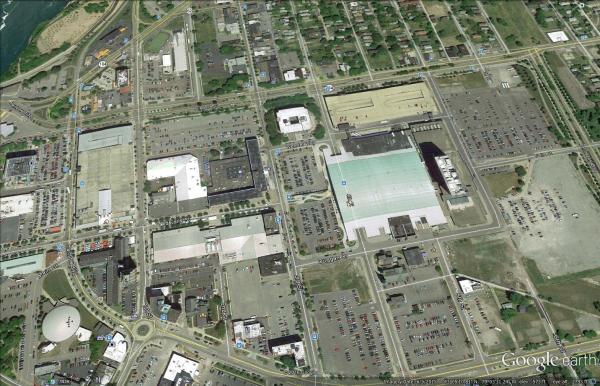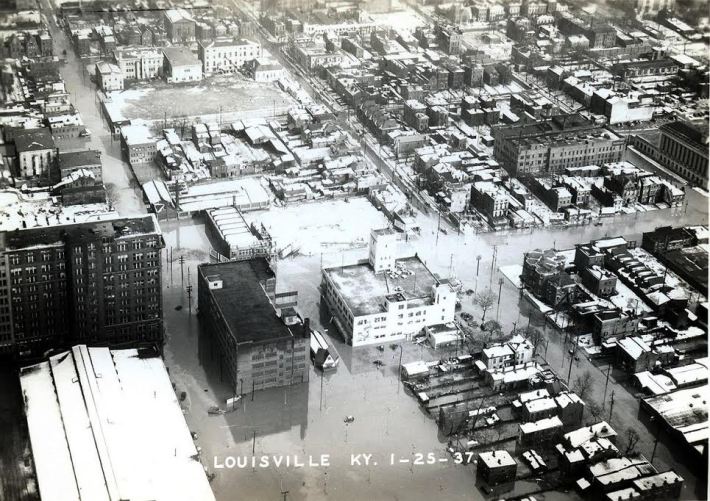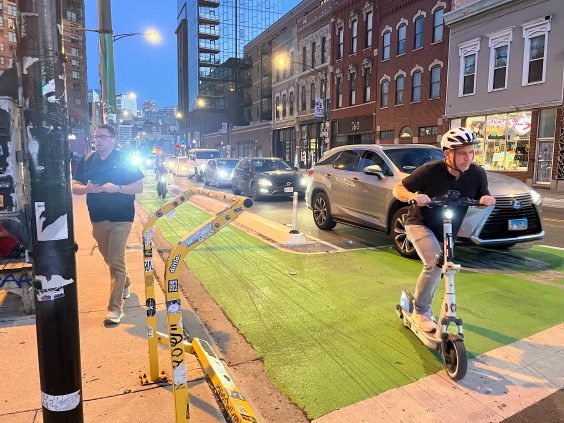Only three cities are left in the running for the Golden Crater in Parking Madness 2016. Today's matchup will determine which insane parking will take on Federal Way, Washington, in the championship match.
Read up on the case for these two semi-finalists and vote below.
Niagara Falls
Niagara Falls is stunning, isn't it? This is downtown, just a few blocks from the actual falls. Not exactly what you have in mind when you picture a scenic destination.
Niagara Falls' population peaked in 1960 and has since fallen by more than half, to about 50,000. The proliferation of parking lots reflects not only the car-based transportation policies of the second half of the 20th Century, but a vicious feedback loop in which low land values discourage development. Citywide about 14 percent of building are vacant, according to the New York State Comptroller [PDF].
Louisville
Here's the parking crater in Louisville's "SoBro" area, immediately south of downtown. Branden Klayko of Broken Sidewalk nominated this entry and highlighted the surface parking lots in red. He also sent in a historical photo of the same area, below. The parking crater, Klayko says, is intimately linked to the widening of Ninth Street -- the one with a big median on the left side of the picture:
In the 20th century, Louisville's Ninth Street was drastically widened to connect with an Interstate interchange. That widening combined with a barracks-style housing project split Downtown from the predominantly black Russell neighborhood and created what is locally called the Ninth Street Divide, a major problem still dividing the city today. At Ninth Street, the tall building is an old office building for the L&N railroad located next to the city's train station. In the old photo [below], you can see the train sheds behind those structures. Needless to say, they have been removed and replaced with enormous parking lots.
Historically, much of what is today SoBro, pictured in the modern view, was residential and very dense. Only a handful of houses remain as the area was bulldozed for parking for Downtown and surrounding business and industry. In the center of the modern photo is Louisville's main post office, a massive, single-story building set back from the street that contributes little to the neighborhood.
Here's the bird's-eye view of roughly the same area in 1937 after a major flooding event. (Some of the present-day parking crater is captured in the bottom half of the photo, but it mostly captures the area directly north.)
On to the voting. Which of these parking craters deserves a shot at eternal infamy?








